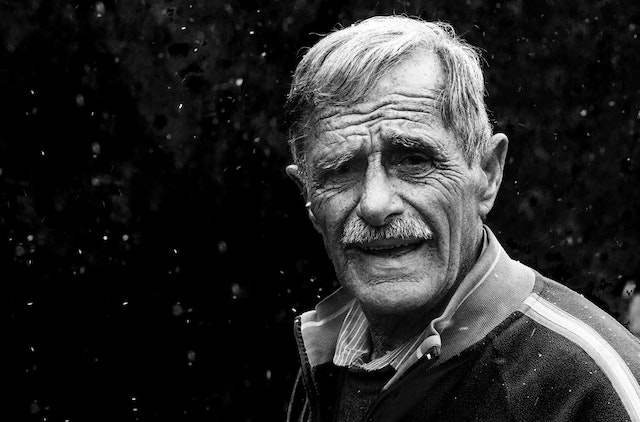
As a photographer, I have spent countless hours capturing the essence of my subjects through the art of photography. For me, portrait photography is not just about taking a picture but it’s about capturing the subjects’ emotions, expressions, and personality. But what exactly is it?
Portrait photography is the genre of photography that aims to capture the expressions, personality, and character of a person or a group of people. It is an art in which photographers aim to create an image that reflects the person’s true self while also being visually appealing.
Brief history and evolution of portrait photography
Portrait photography has a long history, and its evolution has been fascinating over the years. It started as painted portraits, with artists painting their subjects’ pictures on canvas. Later on, when photography came into existence, artists started experimenting with various photographic techniques to capture the essence of people on film. This led to the development of various photographic styles such as traditional portraiture, candid portraits, environmental portraits, and more recently, conceptual portraits.
Importance of portrait photography
Portrait photography is an essential aspect of photography that has a significant impact on our lives. It is a way of capturing memories and preserving them for future generations to enjoy. Furthermore, it is also useful for businesses, as it can be used to capture the personalities of their employees, showcasing their brand image, and creating a connection with their customers.
The most fulfilling aspect of portrait photography is the ability to capture the essence of your subject, be it a happy or sad expression, a particular mannerism, or an elusive personality trait. Whether colored or captured in black and white, portrait photography remains popular today and why it continues to evolve with the times.
Essential elements of portrait photography
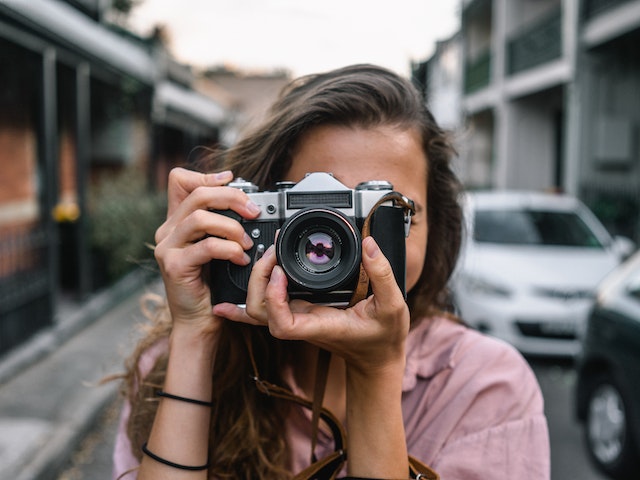
Lighting
One of the most critical aspects of any photograph is lighting, and it is especially essential in portrait photography.
The right lighting can make all the difference, as it can enhance the subject’s best features, highlight their character, and create the desired mood. It is essential to experiment with different lighting techniques, such as natural light, artificial light, and shadows, to find the best one for your subject.
Composition
Composition is another vital element of portrait photography. It involves positioning your subject in the frame, paying attention to visual elements such as lines, shapes, and textures, and creating a pleasing overall image. A good composition can make your subject stand out and draw the viewer’s attention, allowing them to connect with the photo.
Background
The background is also crucial in portrait photography. It can either complement or distract from the subject, so it is essential to choose a suitable background that adds to the overall feel of the photo. A plain background can create a minimalist look, while a busy background can add depth and interest to the image.
Focus and depth of field
In portrait photography, the focus and depth of field determine which areas of the photo are sharp and which ones are out of focus. A shallow depth of field can create a soft, dreamy look, while a deep depth of field can create a sharp, detailed image. It is essential to understand how to control focus and depth of field to get the desired effect.
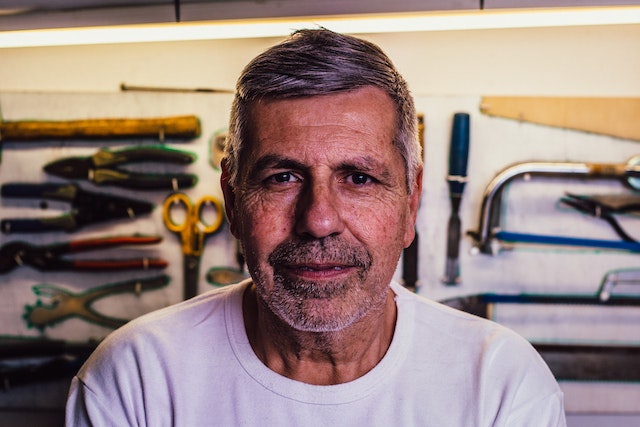
Props and clothing
Props and clothing can help create the desired mood or tell a story in portrait photography.
Whether it’s a hat, a scarf, or something more significant, adding props can add depth and interest to the image. Clothing can also reflect the subject’s personality, style, and character, and can help them feel more comfortable and confident during the shoot.
Expression and emotion
Finally, the expression and emotion of the subject are perhaps the most critical element of portrait photography. As a photographer, it is essential to connect with your subject and make them feel comfortable to capture their natural expressions and emotions. A genuine smile, a serious look, or a laugh can all convey different emotions and personality traits, making each image unique and special.
Types of portrait photography
Studio portraits
Studio portraits are often characterized by a clean, simplistic background. The lighting is carefully controlled to highlight the subject’s best features, and the focus is typically on the person’s face. Studio portraits are popular for professional headshots, family portraits, and modeling shots. They are an ideal choice when you want to showcase the person’s features and create a classic or timeless look.
Environmental portraits
Environmental portraits are shots that capture subjects in their natural setting or environment, making it somewhat similar in concept to wildlife photography. This can include their home, workplace, or even outdoors, such as a park or beach. The purpose of this type of portrait photography is to add context and a sense of place to the image. Environmental portraits are great for showcasing a subject’s personality, lifestyle, and interests.
Candid portraits
Candid portraits are shots that capture the subject in a more natural and spontaneous way. The photographer aims to capture the subject’s authentic emotions, expressions, and actions while they go about their day-to-day activities. This type of portrait photography can be more challenging because the photographer needs to be ready to capture the moment when it happens. Candid portraits are often used in photojournalism or documentary photography.
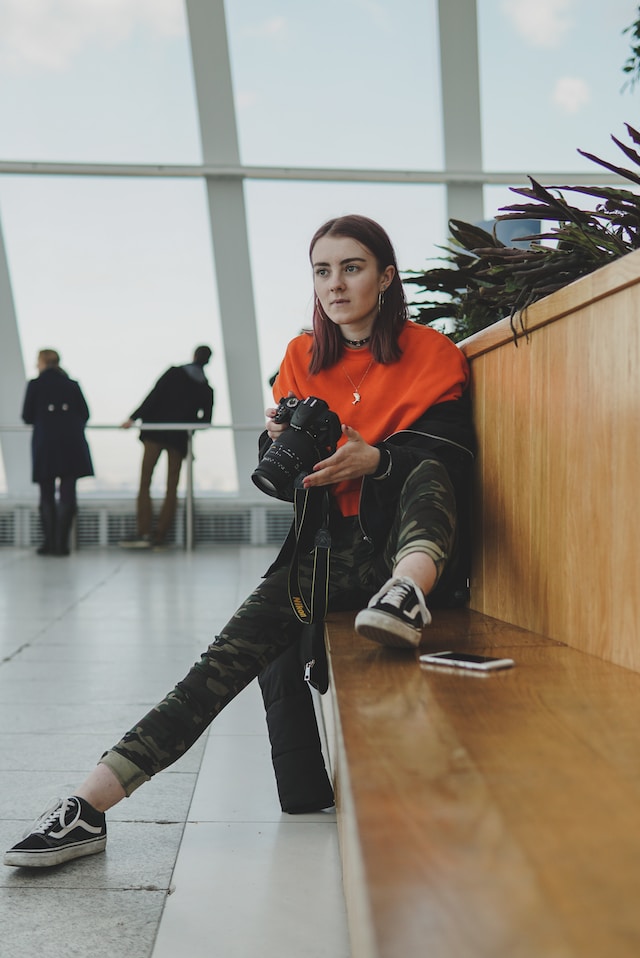
Conceptual portraits
Conceptual portraits are shots that aim to tell a story or convey a specific message. The photographer may use various props, backgrounds, or lighting to create an image that is visually stunning and conceptually interesting. This type of portrait photography can be more challenging because it requires careful planning and execution. Conceptual portraits are often used in advertising, editorial, or fine art photography.
Self-portraits
Self-portraits are shots taken by the subject themselves. They can be simple or elaborate, and the focus is usually on the person’s face or overall appearance. Self-portraits are becoming increasingly popular with the rise of social media and personal branding. They allow people to showcase themselves in a way that they want to be seen and can help build their personal brand or online presence.
Techniques and tips for portrait photography
Portrait photography is an art that requires attention to detail, a mastery of technical skills and of course, having the right gear and equipment. Here are some techniques and tips for capturing stunning portraits:
Choosing the right lens
The lens you choose can have a significant impact on the overall look and feel of your portrait. Here are some things to consider when choosing a lens:
Focal length: A focal length between 50mm and 85mm is considered ideal for portrait photography, as it produces a flattering perspective and bokeh (out-of-focus area) in the background.
Aperture: A wide aperture (low f-stop number) can create a shallow depth of field, blurring the background and drawing attention to the subject. For example, using an aperture of f/1.8 or f/2.8 will create a pleasing bokeh effect, while f/8 or higher will make everything in the frame sharp.
Lens quality: Choose a high-quality lens to ensure sharpness and clarity in your portraits. Prime lenses (fixed focal length) are generally better quality than zoom lenses.
Camera settings
Choosing the right camera settings is crucial in achieving the desired look and feel of your portrait. Here are some settings to consider:

Shutter speed: Use a shutter speed that is fast enough to prevent motion blur, but not so fast that it creates a dark image. A good starting point is around 1/125 or 1/160.
ISO: Set the ISO low (between 100-400) to reduce digital noise in the image.
White balance: Adjust the white balance to the lighting conditions to ensure accurate color reproduction.
Posing techniques
Posing your subject is an essential part of portrait photography. Here are some tips for posing your subject:
Head and shoulders: Ask your subject to turn their head slightly towards the camera, and angle their shoulders to create a flattering pose.
Arms and hands: Have your subject place their hands naturally, such as in their pockets, or resting on a nearby object. Avoid having them place their hands straight down by their sides, as this can create an awkward pose.
Body position: Encourage your subject to lean forward slightly, as this can make them appear more engaged and present in the image.
Communicating with the subject
Communication with your subject is a vital part of portrait photography, as it can make them feel more comfortable and relaxed. Here are some tips for communicating with your subject:
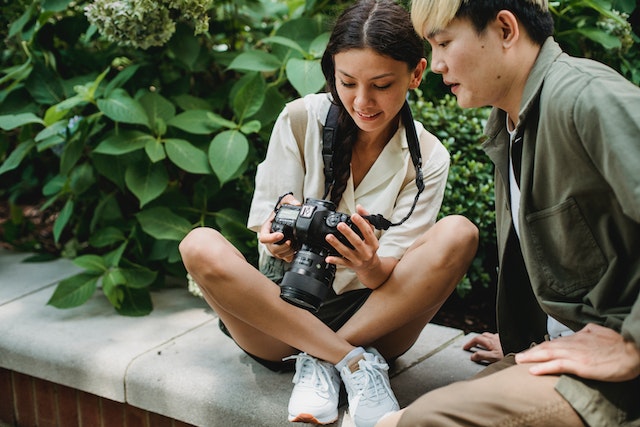
Connect with them: Establish a rapport with your subject by talking to them and finding common ground. This can help them feel more at ease and relaxed.
Give direction: Be clear and concise when giving direction to your subject. Use positive language and avoid negative feedback.
Be sensitive: Be mindful of your subject’s feelings and be respectful of their boundaries. If they are uncomfortable or unsure about a pose, respect their wishes and move on to another pose or idea.
Post-processing
Post-processing techniques can enhance the final image and create a cohesive look and feel. Here are some tips for post-processing your portraits:
- Crop and straighten: Crop and straighten your image to improve the composition and remove any distracting elements.
- Adjust exposure and contrast: Adjust the exposure and contrast to bring out the details in the image.
- Skin retouching: Use skin smoothing techniques to remove blemishes and even out skin tone. Avoid overdoing it, as this can create an unnatural look.
Portrait photography is an art that requires skill, patience, and most importantly, understanding the subject. By experimenting with lighting, composition, and other techniques, photographers can create stunning images that capture the essence of their subjects. Whether it’s a studio portrait or a candid shot, portrait photography has the power to convey emotions, tell stories, and preserve memories for generations to come.